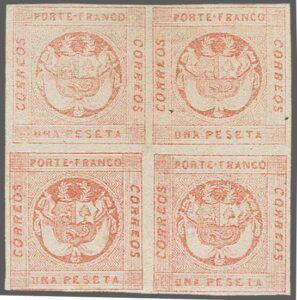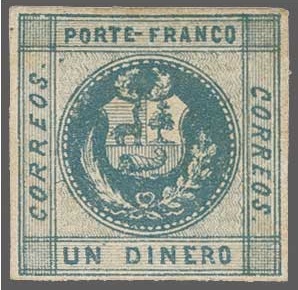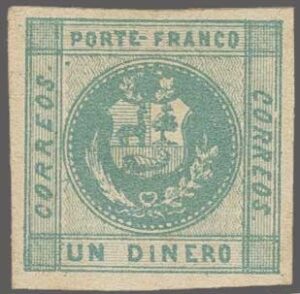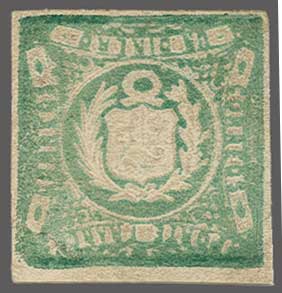 What Can Be Done: Peru is one of the most interesting countries to collect. The stamps listed by Scott as the first issues were actually produced by the American Steam Ship Company and were only for use on mail leaving the country (Technically, as restricted issues, they shouldn’t be listed as #1-2, but Scott is often inconsistent and inaccurate in this regard). The first locally produced issues are a fascinating study. They are imperf and were produced as coils, making then the world’s first coil stamps. Classic Peru is intensely specialized in by cancellation collectors, and many of these cancels sell for very high prices (there’s a specialized book on cancels by Lamy that you can borrow from the American Philatelic Research Library that lists these cancels). Late nineteenth century Peru is a bit problematic as it contains many overprints and some very scarce stamps. But twentieth century Peru is a pleasant study with attractive mint stamps and a modest issuing policy that makes for not too many stamps that a collector needs and not very high prices when you find them. Peru had border disputes (and wars) with most of her
What Can Be Done: Peru is one of the most interesting countries to collect. The stamps listed by Scott as the first issues were actually produced by the American Steam Ship Company and were only for use on mail leaving the country (Technically, as restricted issues, they shouldn’t be listed as #1-2, but Scott is often inconsistent and inaccurate in this regard). The first locally produced issues are a fascinating study. They are imperf and were produced as coils, making then the world’s first coil stamps. Classic Peru is intensely specialized in by cancellation collectors, and many of these cancels sell for very high prices (there’s a specialized book on cancels by Lamy that you can borrow from the American Philatelic Research Library that lists these cancels). Late nineteenth century Peru is a bit problematic as it contains many overprints and some very scarce stamps. But twentieth century Peru is a pleasant study with attractive mint stamps and a modest issuing policy that makes for not too many stamps that a collector needs and not very high prices when you find them. Peru had border disputes (and wars) with most of her  neighbors including Chile, Columbia, and Ecuador. It’s not that Peru is more belligerent than most countries but that the old Spanish Empire for Western South America was Lima, and so when various South American countries achieved independence from Spain, the borders were fluid. This strive had created many Occupation and military issues and war related philately which is always interesting.
neighbors including Chile, Columbia, and Ecuador. It’s not that Peru is more belligerent than most countries but that the old Spanish Empire for Western South America was Lima, and so when various South American countries achieved independence from Spain, the borders were fluid. This strive had created many Occupation and military issues and war related philately which is always interesting.
 Specialty Catalog: Scott is very good for Peru. The Lamy book mentioned above is great for classic cancellations, but sadly, has been out of print for many years and is hard to find.
Specialty Catalog: Scott is very good for Peru. The Lamy book mentioned above is great for classic cancellations, but sadly, has been out of print for many years and is hard to find.
Specialty Albums: The Scott Specialty series is very good for Peru. There is a specialized Peru album printed out of Lima that I’ve seen several times but which I currently find no information on.
Expense: The first two stamps of Peru, which are really not 
Availability of Material: Mint twentieth century Peruvian stamps are plentiful, but it is the nineteenth century that presents a real challenge.
Overall Collecting Grade: B+
